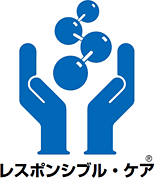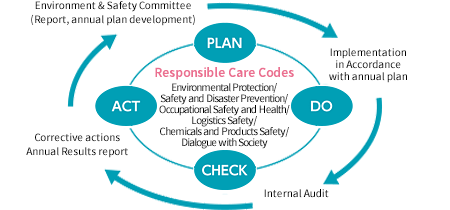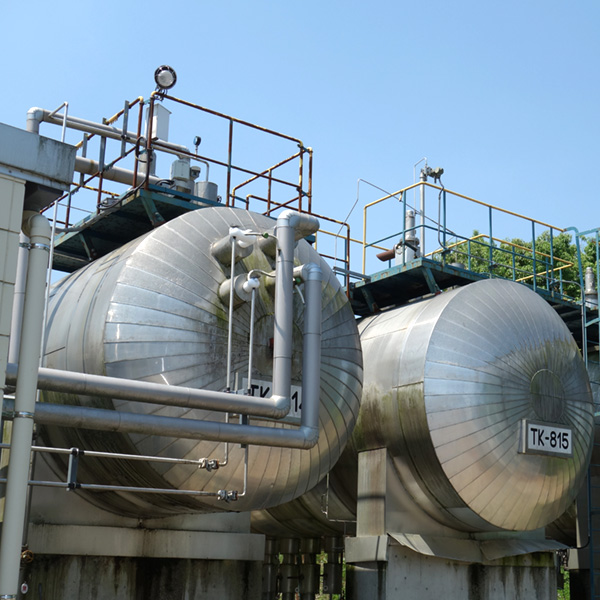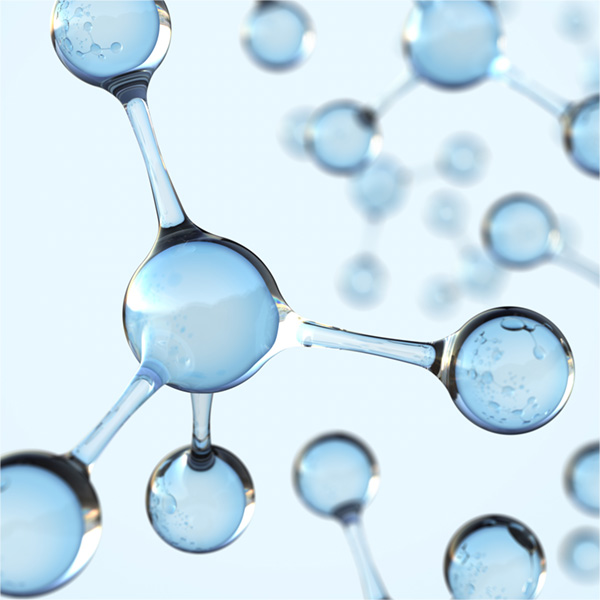
Sustainability
Continuous Improvement of Responsible Care Activities
- HOME >
- Sustainability >
- Continuous Improvement of Responsible Care Activities >
- Responsible Care Management
Responsible Care Management
Policy/Philosophy

In order for consumers to safely and confidently use chemical products that enrich their lives, we engage in Responsible Care (RC) activities, which are voluntary activities. RC activities aim to ensure environment, health and safety (EHS) throughout the entire processes from development of chemical products to manufacturing, distribution, use, final consumption, disposal and recycling. These activities also serve as a form of communication with society through the announcement of their results. Chemical companies in more than 60 countries and regions are working on RC activities. In Japan, the Japan Responsible Care Council (JRCC, current JCIA RC committee) was established by the Japan Chemical Industry Association (JCIA) in 1995. We are one of the original members of JRCC. We have also signed the Responsible Care Global Charter, which was revised in 2014, and we are enhancing our efforts in RC activities.
In addition, we have set priority matters related to EHS in all stages of our business activities as our Responsible Care Basic Policy. We have fully shared these basic policies.
Responsible Care Basic Policy
- (1)Protect the environment and human health and safety, and contribute to the sustainable development of society by striving to understand and continuously improve the impact on the global environment and society through our business activities, products and their lifecycles and supply chains.
- (2)Prevent to fires, explosions, and leaks, as well as occupational accidents by striving to understand and reduce risks, based on "Safety first".
- (3)Respond to confidence from society and stakeholders by complying laws and rules of the environment, health and safety.
- (4)Contribute to the safety and security of society and local communities through accurate and highly transparent information transmission and dialogue about the environment, health and safety.
Date of Revision: April 1, 2023
System
Nissan Chemical RC Management System
To achieve our RC mid-term plan, we have established RC management system※, and we carry out targets management and continuous improvements based on PDCA (Plan, Do, Check, Act) cycle.
We have established the Environment & Safety Committee, which is chaired by the officer responsible for the Environment, Safety & Quality Assurance Department, as the organization in charge of promoting these activities. The committee holds annual meeting, at which its members discuss the results of activities at each laboratory / plant, review all the activities of the Company, and set the RC targets for the next fiscal year.
The results of the discussion are reported to management meeting. The targets of next fiscal year are resolved at the Board of Directors meeting after deliberated and approved at the management meeting.
- All of our plants have acquired ISO14001 certification, international standard for environmental management system.

Indicators
Promotion of the RC Mid-Term Plan (FY2022 – 2027)
| Important issue | New mid-term plan (FY2022-2027) | FY2022 plan | Achievement assessment | FY2023 plan | |
|---|---|---|---|---|---|
| Ⅰ. Thorough Governance |
1. Review of Responsible Care Activities (1) Safety and Disaster Prevention (2) Occupational Safety and Health
|
1. Review of Responsible Care Activities (1) Safety and Disaster Prevention (2) Occupational Safety and Health
|
☆☆ |
1. Review of Responsible Care Activities (1) Safety and Disaster Prevention (2) Occupational Safety and Health
|
1. Review of Responsible Care Activities (1) Safety and Disaster Prevention (2) Occupational Safety and Health
|
(3) Chemicals and products safety
|
(3) Chemicals and products safety
|
☆☆ |
(3) Chemicals and products safety
|
(3) Chemicals and products safety
|
|
2. Strengthening internal controls
|
2. Strengthening internal controls
|
☆☆☆ |
2. Strengthening internal controls
|
2. Strengthening internal controls
|
|
| Ⅱ. Response to Group Major Risks |
1. Thorough compliance with laws and regulations
|
1. Thorough compliance with laws and regulations
|
☆☆☆ |
1. Thorough compliance with laws and regulations
|
1. Thorough compliance with laws and regulations
|
2. Environmental Considerations "Reducing Environmental Impact"
|
2. Environmental Considerations "Reducing Environmental Impact"
|
☆☆☆ |
2. Environmental Considerations "Reducing Environmental Impact"
|
2. Environmental Considerations "Reducing Environmental Impact"
|
|
Activities
RC Audits
RC audits are activities for checking RC activities at each plant, laboratory and affiliate. They are carried out by Environment, Safety & Quality Assurance Department in accordance with the RC audit guidelines. In these audits, the auditors periodically check whether RC activities, as well as internal audits and patrols, are carried out appropriately and the PDCA cycle is implemented without fail, and compliance about RC at each location. Environment, Safety & Quality Assurance Department clarifies visible or potential problems related to RC and promotes improvements in response after clarifying the problems, if any. In FY2022, total 27 audits were conducted for plants, laboratories and affiliates.





